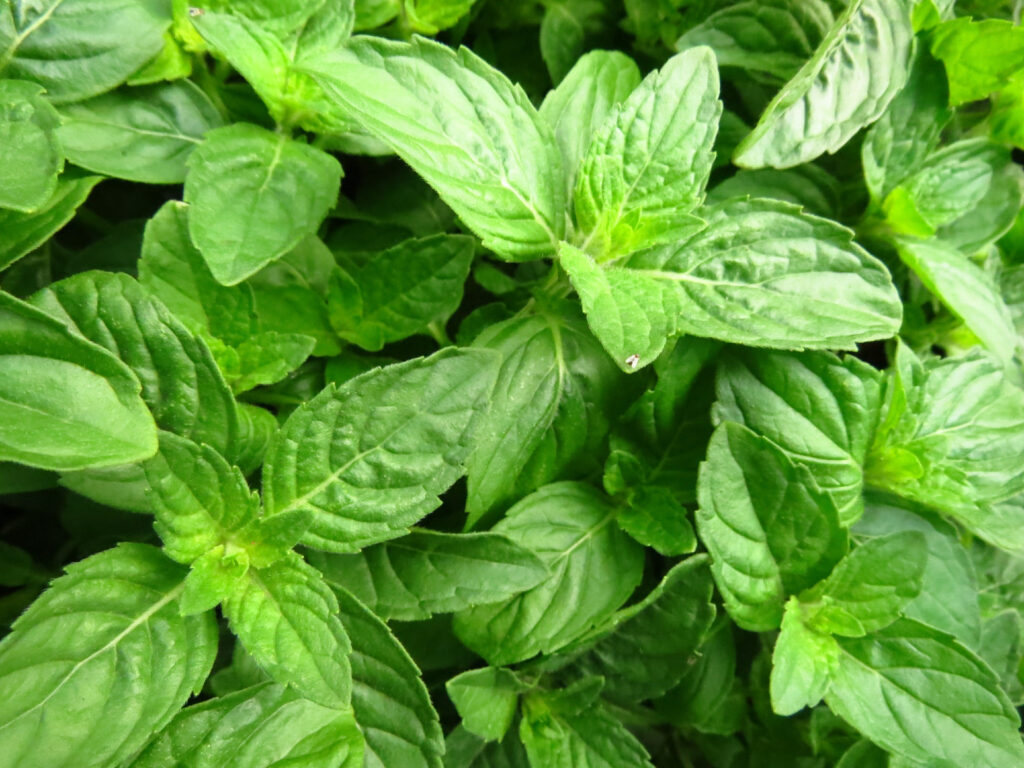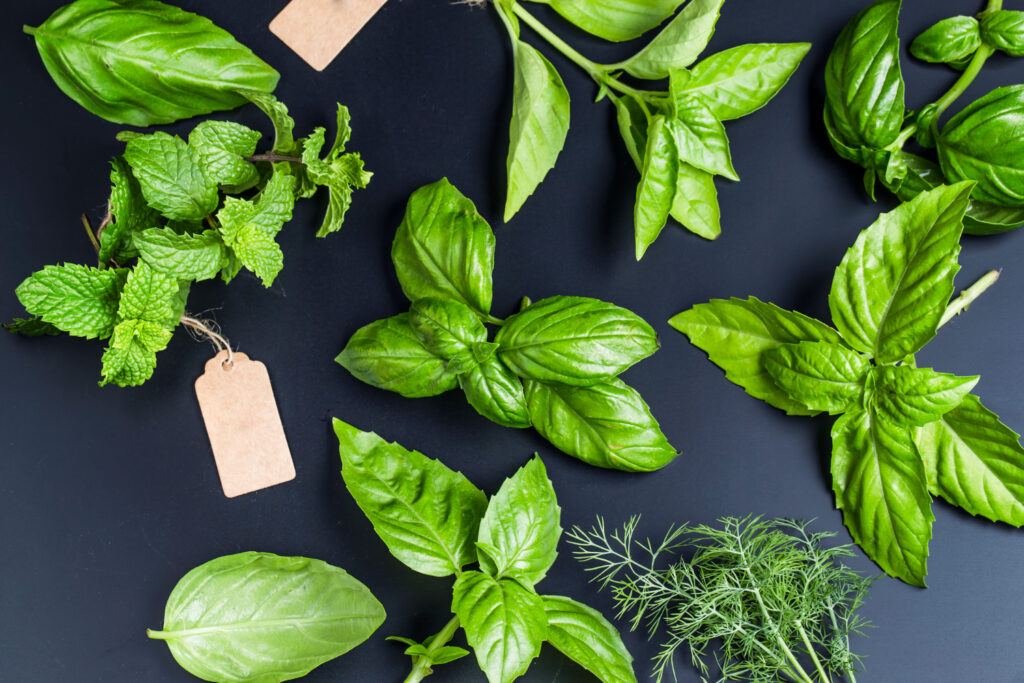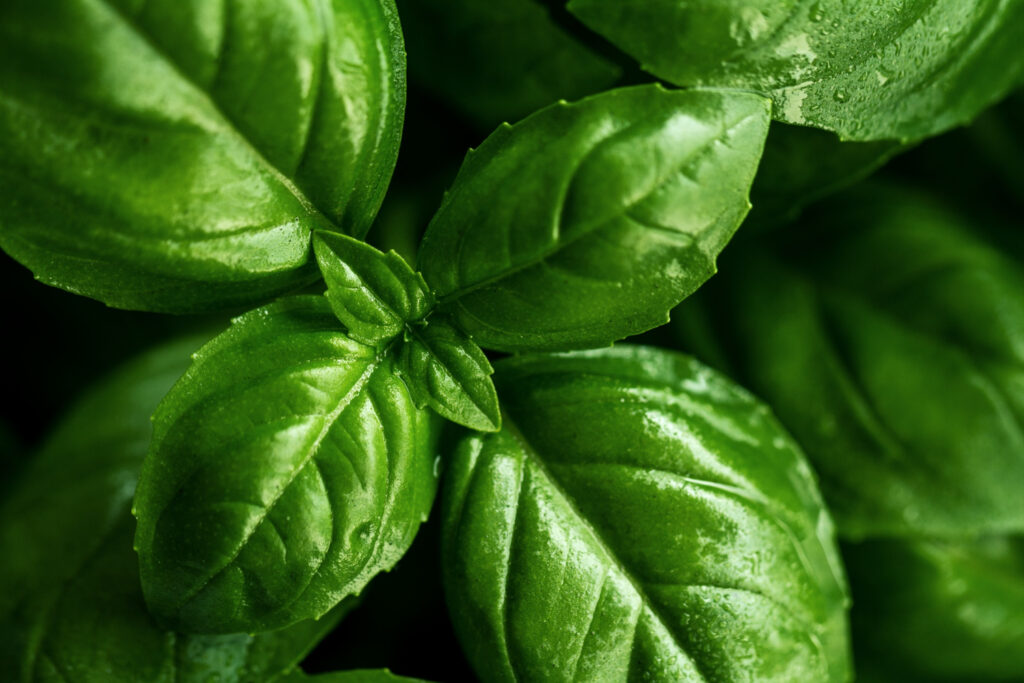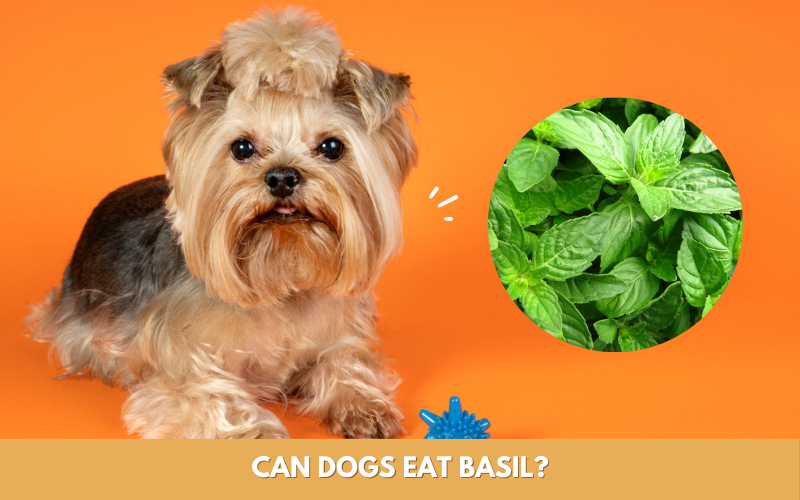Can dogs eat basil? As a pet owner, you want to ensure that your furry friend is getting a healthy and balanced diet. While there are many different types of dog food available, you may be wondering if there are any human foods that you can safely share with your pup. Basil is a popular herb in many cuisines, and you may be curious if it’s safe for your dog to eat. In this article, we’ll explore the potential benefits and risks of feeding your dog basil, so you can make an informed decision about what to feed your furry friend. So, let’s dive into the question, can dogs eat basil?
What is Basil?

Basil is a popular herb that belongs to the mint family, and it is widely used in cooking all over the world. It is an annual plant that grows to about 12-24 inches tall, with green leaves that have a fragrant aroma and a sweet, slightly spicy taste. Basil is available in several varieties, such as sweet basil, Thai basil, and lemon basil.
Can dogs have basil?
If you want to know is basil ok for dogs? Yes, dogs can eat basil, and it is generally safe for them to consume in moderate amounts. Basil is not toxic to dogs, and it can provide several health benefits. However, it is important to note that when feeding your pup basil make sure it is in its fresh form and not processed, as the latter may contain toxic ingredients.
Additionally, in large quantities, basil can be a choking hazard for dogs so make sure to use caution when introducing this herb into your pup’s diet. When given in moderation, basil can provide multiple benefits for your dogs such as aiding digestion and helping to reduce stress and anxiety
Health benefits of basil for dogs

The potential health benefits of feeding basil to dogs include:
- Anti-inflammatory properties: Basil contains essential oils that have anti-inflammatory properties, which can help reduce inflammation in dogs and alleviate pain caused by conditions such as arthritis.
- Digestive health: Basil can aid in digestion and improve gastrointestinal health in dogs. It can also help reduce flatulence and bloating.
- Antimicrobial properties: Basil contains compounds that have antimicrobial properties, which can help prevent bacterial and fungal infections in dogs.
- Stress relief: The aroma of basil can help calm dogs and reduce stress levels.
- Nutritional benefits: Basil is a good source of vitamins and minerals, including vitamin K, vitamin A, and calcium, which are essential for overall health and wellbeing in dogs.
Overall, feeding your dog small amounts of fresh basil can be a healthy addition to their diet and provide them with several potential health benefits. However, it is essential to ensure that you do not overfeed basil or any other human food to your dog, as this can cause digestive upset or other health issues. Additionally, it is always best to consult with your veterinarian before making any changes to your dog’s diet.
Which parts of basil you can feed to your dogs?
When feeding your pup basil it is important to know which parts of the herb are safe for them to consume:
Can dogs eat basil leaves?
Yes, dogs can eat basil leave to consume in moderate amounts. Basil leaves are not toxic to dogs, and they can provide several health benefits. However, it is important to note that dogs should only consume fresh basil leaves, and they should not be fed any basil leaves that have been seasoned with garlic, onion, or other harmful ingredients.
When giving your dog basil leaves, you should make sure they are clean and free of any dirt or pesticides. You can chop the basil leaves into small pieces and mix them in with your dog’s regular food or offer them as a healthy snack. To keep your stomach from getting upset, you should start with a small amount of basil and slowly add more.
Can dogs eat basil plants?
Dogs can eat basil plants in moderation, but it is not recommended to allow them to consume large quantities of the plant. Basil is usually safe for dogs to eat, but the plant’s essential oils can make some dogs sick or give them allergic reactions. Also, some dogs may want to chew on the plant, which could cause them to choke or get an intestinal blockage if they eat too much of it.
If you choose to allow your dog to eat basil plants, it is important to supervise them and make sure that they only consume small amounts of the plant. You can add chopped basil leaves to your dog’s food or offer them as a treat.
Can dogs eat basil seeds?
It is generally safe for dogs to consume basil seeds in small amounts. Basil seeds are small, black seeds that look a lot like chia seeds. They are used in cooking and as a natural remedy for digestive problems in people. In dogs, basil seeds can help promote healthy digestion and alleviate symptoms of constipation.
However, it is important to keep in mind that basil seeds can absorb water and expand, which could potentially cause intestinal blockage in dogs if consumed in large amounts. Therefore, it is essential to feed your dog only a small number of basil seeds and ensure that they are well-hydrated before consuming them. If you choose to feed your dog basil seeds, it is best to soak them in water or add them to wet food to make them easier to digest.
Can dogs eat basil buds?
Dogs can eat basil buds, but it is recommended to feed them in moderation. Basil buds are the small flower buds that appear on the basil plant before it blooms. They are safe for dogs to consume in small amounts and can provide several potential health benefits, including anti-inflammatory, antimicrobial, and digestive benefits.
Can dogs eat basil stems?
While dogs can technically eat basil stems, it is not recommended to feed them to your dog. Basil stems are tough and fibrous, and they can be difficult for dogs to digest, potentially causing gastrointestinal upset or choking if consumed in large amounts. Also, basil stems don’t have any major health benefits for dogs and don’t taste or smell as good as basil leaves.
Can dogs eat basil flowers?
Dogs can eat basil flowers in small amounts, and they are generally safe for them to consume. Basil flowers are small, delicate flowers that appear on the basil plant when it is in bloom. They are safe for dogs to eat, and they may have health benefits like reducing inflammation, killing germs, and helping with digestion.
Is basil harmful to dogs?
Basil is generally safe for dogs to eat in small amounts, but there are potential risks and negative effects associated with feeding it to them.
Potential risks of feeding basil to dogs:
- Digestive upset: Basil contains essential oils that can cause digestive upset in some dogs, such as vomiting or diarrhea.
- Allergic reactions: Some dogs may be allergic to basil, and if they consume it, they can experience symptoms such as itching, swelling, or difficulty breathing.
- Intestinal blockage: If a dog eats large quantities of basil plant material, it can potentially lead to intestinal blockage, which is a serious and potentially life-threatening condition.
- Pesticide exposure: If the basil has been treated with pesticides or other chemicals, it can be toxic to dogs if consumed.
If you suspect that your dog has consumed too much basil or is experiencing any negative effects after eating it, contact your veterinarian immediately.
How to know if dogs are allergic to basil?
While rare, some dogs may be allergic to basil. Signs of an allergic reaction to basil in dogs can include:
- Skin irritation or rash
- Itching or scratching
- Swelling of the face, lips, or tongue
- Difficulty breathing or wheezing
- Vomiting or diarrhea
If you suspect that your dog may be allergic to basil, it is essential to stop feeding it to them and contact your veterinarian for advice. Your veterinarian may recommend allergy testing to identify the specific allergen causing the reaction and provide treatment options, such as antihistamines or steroids, to alleviate the symptoms.
To avoid allergic reactions or other health issues, it is always best to introduce new foods to your dog’s diet gradually and in small amounts. Additionally, make sure to monitor your dog for any signs of digestive upset or allergic reaction when introducing new foods or plants, including basil, to their diet. If you notice any adverse reactions, stop feeding the food or plant and contact your veterinarian for advice.
How to feed basil to dogs safely?

Here are some recommendations for feeding basil to dogs safely:
- Introduce basil gradually: When introducing basil or any new food to your dog’s diet, start with small amounts and gradually increase the portion size over time.
- Wash basil thoroughly: Before feeding your dog basil, make sure to wash it thoroughly to remove any dirt, pesticides, or chemicals.
- Offer fresh basil: Fresh basil is best for dogs, as dried basil can lose some of its nutritional value and may contain added preservatives or seasonings that are not safe for dogs.
- Remove stems and wilted leaves: When feeding your dog basil, make sure to remove any stems or wilted leaves, as they can be difficult for dogs to digest.
- Chop basil into small pieces: Chop the basil into small, bite-sized pieces before feeding it to your dog. This will make it easier for them to eat and digest.
- Offer as a treat or topping: You can add chopped basil leaves to your dog’s food or offer them as a healthy treat. Basil can also be used as a topping for your dog’s favorite food or used to add flavor to homemade dog treats.
- Avoid seasoning or spices: Do not add any seasonings, spices, or oils to the basil when feeding it to your dog, as these can be harmful to dogs.
Remember, while basil is generally safe for dogs to eat in small amounts, it should not be the primary source of nutrition for your dog. Before adding new foods or supplements to your dog’s diet, talk with your doctor.
How much basil can I give my dog and how often?
The amount of basil that you can safely feed your dog depends on their size, age, and overall health. As a general rule, it is best to feed basil to dogs in moderation and as a supplement to their regular diet.
Here are some general guidelines for how often dogs can eat basil based on their size:
| Dog Size | Amount of Basil | Frequency |
| Small (under 15lbs) | Pinch of basil | Once a day |
| Medium (15-40lbs) | ½ teaspoon of basil | Every other day or a few times a week |
| Large (over 40lbs) | Up to 1 teaspoon of basil | Once a day or a few times a week |
Remember, it is essential to consult with your veterinarian before introducing any new food or supplement to your dog’s diet, including basil. Your veterinarian can provide guidance on the appropriate amount of basil that your dog can safely consume based on their size, age, and overall health.
Can dogs eat fresh basil?
Yes, dogs can eat fresh basil, and it is safe for them to consume in moderation. Fresh basil is a healthy and nutritious addition to your dog’s diet and can provide several potential health benefits.
Fresh basil contains essential vitamins and minerals, including vitamin K, vitamin C, and antioxidants. Additionally, basil has anti-inflammatory and antimicrobial properties, which can help improve your dog’s immune system and overall health.
Can dogs eat Thai basil?
Yes, dogs can eat Thai basil in moderation. Thai basil is a type of basil that is commonly used in Southeast Asian cuisine and has a slightly different flavor profile than sweet basil, but it still contains many of the same essential vitamins and minerals.
Can dogs eat basil pesto?
While basil pesto is generally safe for dogs to consume in small amounts, it is important to keep in mind that pesto typically contains additional ingredients, such as garlic, onions, or nuts, that can be harmful to dogs if consumed in large quantities.
Garlic and onions can be toxic to dogs, causing damage to their red blood cells and leading to anemia. Nuts, such as pine nuts, in pesto can be high in fat and calories, which can cause digestive upset or lead to obesity in dogs if consumed in large amounts.
Therefore, it is best to avoid feeding your dog store-bought pesto that may contain these harmful ingredients. Instead, you can make your own pesto at home using safe ingredients and offer it to your dog in small amounts as a treat or topping for their food.
When making homemade pesto for your dog, make sure to exclude any harmful ingredients and limit the amount of oil and nuts you use to avoid adding too many calories to their diet. Before giving your dog a new food, you should always talk to your vet to make sure it is safe and meets their specific needs.
Can dogs eat dried basil?
Yes, dogs can eat dried basil, but it is important to keep in mind that dried basil may lose some of its nutritional value compared to fresh basil. However, dried basil can still provide several potential health benefits to dogs, including anti-inflammatory, antimicrobial, and digestive benefits.
When feeding your dog dried basil, make sure to use a high-quality, organic product without any added preservatives or seasonings. You can add a small amount of dried basil to your dog’s food or offer it as a treat. However, it is essential to monitor your dog for any signs of digestive upset or allergic reaction when introducing new foods or plants, including dried basil, to their diet.
Can dogs eat tomato basil soup?
It is generally not recommended to feed dogs tomato basil soup, as it may contain ingredients that can be harmful to dogs.
Tomatoes contain solanine, a toxic compound that can cause digestive upset or even toxicity in dogs if consumed in large amounts. While cooked tomatoes, such as those used in tomato basil soup, may have lower levels of solanine, it is still not recommended to feed them to dogs in large quantities.
Additionally, tomato basil soup often contains other ingredients, such as onions or garlic, which can be toxic to dogs if consumed in large amounts. The high sodium content in soup can also be harmful to dogs, causing dehydration, electrolyte imbalances, and other health issues.
Therefore, it is best to avoid feeding your dog tomato basil soup or any other soup that may contain harmful ingredients. Stick to feeding your dog a well-balanced, high-quality dog food that meets their nutritional needs. If you want to offer your dog a treat or supplement to their regular diet, choose safe, dog-friendly foods such as cooked chicken, vegetables, or fresh fruits.
Can dogs eat basil and oregano?
Basil and oregano are both safe for dogs to consume in moderation and can offer several potential health benefits. Both herbs are rich in antioxidants and have anti-inflammatory properties, which can help improve your dog’s immune system and overall health.
If you are planning to feed your dog a mix of basil and oregano, it is important to make sure that the herbs are fresh, organic, and free from any added seasonings, spices, or oils that could be harmful to your dog.
You can add a small amount of chopped basil and oregano to your dog’s food or offer it as a healthy treat. However, it is essential to monitor your dog for any signs of digestive upset or allergic reaction when introducing new foods or plants to their diet.
Can dogs eat basil and parsley?
Yes, dogs can eat basil and parsley together, and both herbs are safe for them to consume in moderation. Basil and parsley both have important vitamins and minerals, like vitamin K, vitamin C, and potassium, that can help your dog’s immune system and overall health.
When feeding your dog basil and parsley together, make sure to use fresh, organic herbs and chop them into small pieces. You can add a small amount of the chopped herbs to your dog’s food or offer them as a healthy treat.
Can puppies eat basil?
Yes, puppies can eat basil in moderation, but it is important to introduce new foods gradually and monitor your puppy for any signs of digestive upset or allergic reaction.
Basil may be good for a puppy’s health in a number of ways, including as an anti-inflammatory, an antimicrobial, and a digestive aid. However, like all foods, basil should be given in moderation and as a supplement to your puppy’s regular diet.
When feeding your puppy basil, make sure to use fresh, organic herbs and remove any stems or wilted leaves. Chop the basil into small pieces and offer it as a treat or add it to your puppy’s food in small amounts. It is important not to add any seasonings or spices to the basil, as these can be harmful to puppies.
Always check with your vet before giving your puppy a new food or supplement to make sure it is safe and right for their needs. Also, puppies have specific dietary needs, so it’s important to make sure their food is well-balanced and gives them all the nutrients they need to grow and develop.
Other herbs that dogs can eat
Several other herbs are safe for dogs to eat and can provide similar nutritional benefits to basil. Here are some other herbs that you can consider adding to your dog’s diet:
- Parsley: Parsley is a herb that is safe for dogs to eat in moderation. It is rich in vitamins A and C, and can also help freshen your dog’s breath.
- Rosemary: Rosemary is a herb that is safe for dogs to eat in small amounts. It is rich in antioxidants and can also help support your dog’s digestive system.
- Thyme: Thyme is a herb that is safe for dogs to eat in moderation. It is rich in vitamin C and can also help boost your dog’s immune system.
- Sage: Sage is a herb that is safe for dogs to eat in small amounts. It is rich in antioxidants and can also help improve your dog’s brain function.
When comparing the nutritional benefits of other herbs with basil, it is important to note that each herb has its unique nutritional profile. While basil is rich in vitamin K, vitamin C, and antioxidants, parsley is rich in vitamins A and C, and rosemary is rich in antioxidants. Therefore, it can be beneficial to rotate different herbs in your dog’s diet to ensure that they are getting a variety of nutrients.
FAQs
Is it safe to feed my dog store-bought basil products such as basil oils or extracts?
It is not recommended to feed store-bought basil products such as basil oils or extracts to your dog as they may contain additional ingredients that can be harmful to dogs. It is best to stick to fresh, organic basil or homemade basil preparations.
Can basil help with my dog’s bad breath?
Yes, basil can help freshen your dog’s breath due to its antibacterial properties. Chewing on fresh basil leaves can help reduce bacteria in the mouth and improve breath odor.
Can I give my dog basil as a natural remedy for certain health conditions?
Yes, basil has several potential health benefits for dogs, including anti-inflammatory, antimicrobial, and digestive benefits. It may be beneficial in managing certain health conditions such as inflammation, digestive issues, and respiratory problems. However, it is always best to consult with your veterinarian before using basil or any other herb as a natural remedy.
Can basil help with my dog’s joint pain?
While basil has anti-inflammatory properties, there is limited research on its effectiveness in managing joint pain in dogs. It is best to consult with your veterinarian for a proper diagnosis and treatment plan for your dog’s joint pain.
Can I give my dog basil if they are pregnant or nursing?
It is best to avoid giving basil to pregnant or nursing dogs as it can potentially cause uterine contractions. Ask your vet about safe meals and supplements for pregnant or nursing dogs.
Conclusion
In summary, the answer to the question Can dogs eat basil? is yes, but with proper precautions. Feeding basil to dogs can offer several potential health benefits. Fresh, organic basil should be used, and any stems or wilted leaves should be removed. It is important to follow the recommended feeding guidelines based on your dog’s size and to introduce basil to their diet gradually, monitoring for any signs of digestive upset or allergic reaction. Feeding your dog the right food and amounts is essential for their overall health and well-being.

